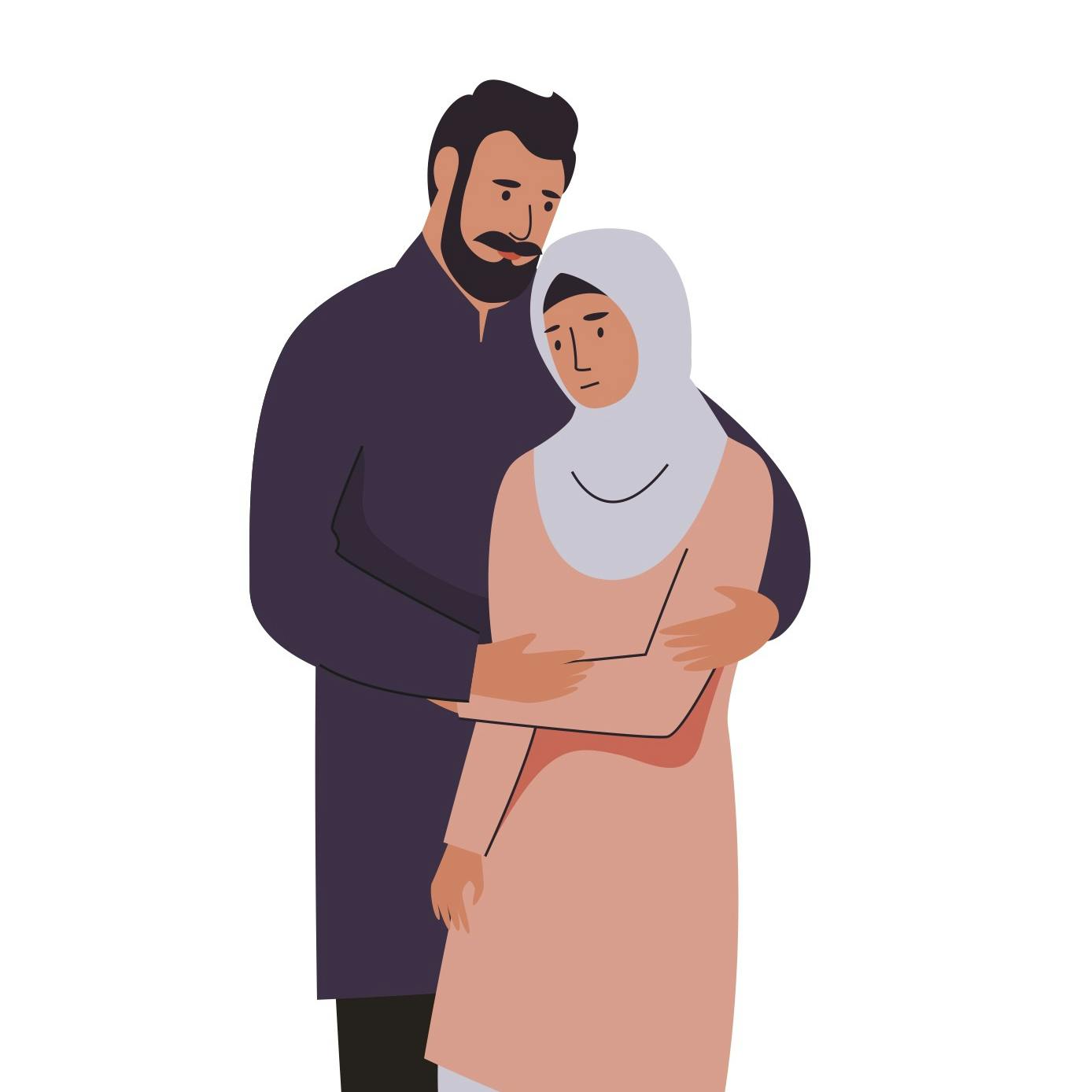
Funeral Procession: General Rules and Best Practices
Everything you need to know to travel safely and respectfully in a funeral procession

Funeral processions have a long and storied history. They have evolved into a special way of sending off and honoring a person as part of the memorial service. When planning a funeral, you’ll want to decide if the service will continue to a cemetery (or if that’s even appropriate, considering what kind of service you’re having). The memorial team from the funeral home or institution supporting you through the process will ensure that logistics are managed in the way you best see fit to honor and remember your loved one.
There are many ways to share the love and legacy you have for a person who has passed. Here at Lantern, we want to ensure that the process is as smooth and peaceful as possible with resources, tools, and ideas, so you can focus on finding community and support with your friends and family. Here are some general rules and best practices for a funeral procession.
What Is a Funeral Procession?
A funeral procession takes place when the memorial or funeral service is in a different location than the burial. The history of funeral procession predates motorized vehicles by centuries, but many of the proper rules and etiquette guidelines still remain the same.
You may find that you are in a funeral procession that does not involve getting into your vehicle. Some funeral homes and houses of worship are within walking distance to the burial locations. These processions are similar to those of the past, where individuals would walk, ride horses, or take carriages to the next stage of the service.
Whatever form the funeral procession may take, it’s still important to follow these funeral procession recommendations in order to maintain a level of respect, support the family, and honor the deceased.
Why Have a Funeral Procession?
If you are planning a funeral for a loved one, you may be wondering if having a funeral process is the proper step in honoring their life. This depends on whether you want to have the burial service open to others or if you want to keep it private. A funeral procession is specifically designed to help guide the funeral-goers to the burial site, so you may decide it’s not the appropriate step for the specific memorial service you are planning.
Another reason to consider a funeral procession is to honor the legacy and memory of the person you are wishing farewell to. It can take on a peaceful and hopeful message that your friend or family member is being sent off with the love and support of their community.
You are under no obligation to host a funeral procession or to share the burial service with others. If you are planning a funeral on a budget or simply interested in keeping the service private and personal, a funeral procession might not be right for your needs.
What Are the Types of Funeral Processions?
While funeral processions are typically somber events, the type of memorial service and funeral procession you plan should best reflect the individual you are honoring and that can take many forms.
For instance, in places like New Orleans, Louisiana, a funeral procession, sometimes called a jazz funeral, is a time of celebration and music, with dancing and jazz in the streets as the funeral-goers travel from the memorial service to the burial site. This can be a type of celebration of life event that both mourns the passing of your loved one and allows for a remembrance of their legacy and a joyful send-off to the next stage of their journey.
The funeral procession you plan is individual and personal, so consider how you most want to represent and honor your friend or family member.
How Do I Drive in a Funeral Procession?
Driving in a funeral procession can feel a little intimidating the first time, and it can be challenging on the day of to focus on logistics. Knowing in advance how to navigate a funeral procession can help you drive safely and focus on the most important part of the day—honoring your loved one.
Here are a few rules and practices you’ll want to keep in mind as you travel from the funeral service to the burial site.
Drive Slowly. Most of the time, a funeral procession will be driving under the speed limit. This is to ensure that all of the vehicles stay together. Driving slowly will help to keep you all safe and to avoid accidents or fender benders that can occur when you stay close to another driver.
Stay Close. It is important when driving in a funeral procession to stay very close to the car in front of you, which is why funeral processions drive so slowly. When you maintain a close distance, you reduce the risk of breaking up the procession or getting lost. This helps to ensure that everyone arrives at the burial site in a safe and orderly fashion.
Know Your Rights. There is a lot of confusion surrounding the rules of the road when it comes to funeral processions, and that is largely because the laws differ on a local and state basis. In many places, it is legal for funeral processions to disregard red lights in order to maintain a single, cohesive line, but that can be dangerous and challenging at times.
Turn on Your Lights. If a funeral procession is long, other drivers on the road might not know that you are a part of it. Many funeral homes will provide flags and other identifiers, but you’ll also want to keep your headlights or hazard lights on as an indication that you are part of the larger procession.
Pay Attention. The day of the funeral service can bring lots of logistical and emotional challenges. You may be trying to find lodging for out of town relatives or communicating with caterers. You may also find that your personal experience with grief and loss makes it difficult to concentrate. These are all extremely valid experiences and responsibilities, but it is essential to compartmentalize them while you are part of the funeral procession.
Ask your passenger or a friend to manage any messages or calls you might have to take. Try to focus on the vehicle in front of you and stay safe and careful as you maintain your position in the procession. Because you are driving slowly and because funeral processions often have leeway regarding road rules, it is essential that you pay close attention to the road and keep yourself and others safe.
Follow the Funeral Home’s Lead (if applicable). Don’t be nervous if you’ve never driven in a funeral procession before. The funeral home will work with you to ensure that everyone moves safely from the location of the service to the burial site. Depending on the funeral home, they may hand out flags to be identified as part of the procession and will help to ensure that each person arrives on time. If you have questions regarding the procession, speak with the funeral home team.
Maintain Respect. Oftentimes, a memorial or funeral service is a somber event (although not always). If you are joining a funeral procession, maintain that same level of respect as you are driving and after you arrive at the site. The funeral home or house of worship is just one part of the service, so avoid changing clothes or engaging in rowdy behavior unless this has been specifically communicated as appropriate to the scenario.
After the procession arrives at the burial site, remember that level of respect and support you maintained during the service. Keep your voice low, encourage children to remain quiet, and avoid taking calls or engaging in personal conversations, if you can. This helps to keep the funeral procession focused on honoring your friend or family member and provides those closest to the deceased the support they need.
In Summary
Whether you’re planning a traditional burial or an alternative burial option, like a green burial, a funeral procession is a way of supporting and honoring someone who has passed. They allow funeral-goers a way to navigate easily from the service to the burial site and serve as a method of farewell that can help to provide a sense of peace and hope.
There are many ways to plan a funeral procession. With the support of friends and family or the professionals at the funeral home or your place of worship, you can create a procession of celebration, honor, and joy that best reflects the person you love.
